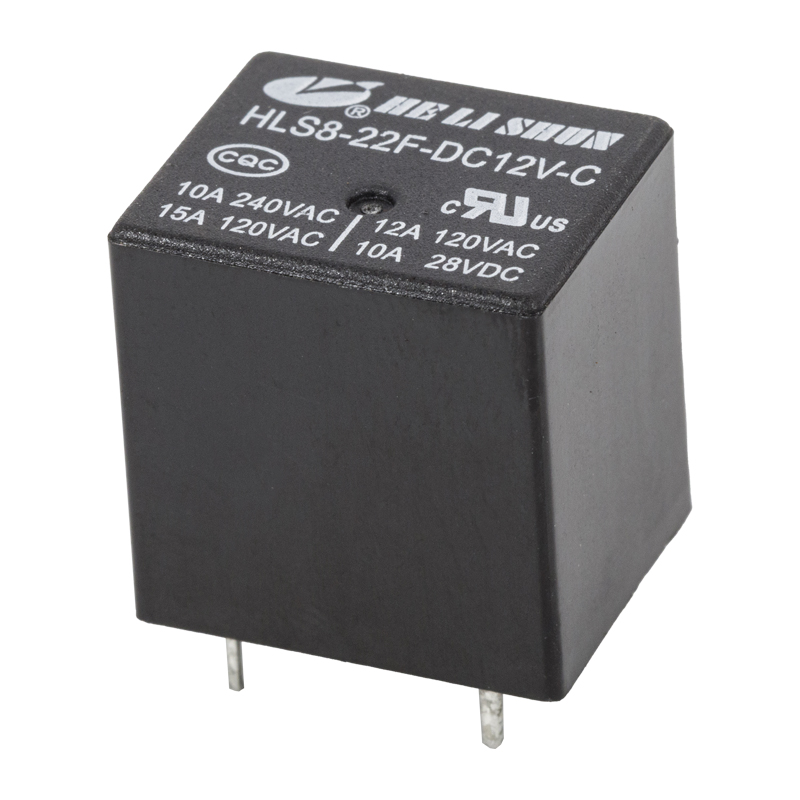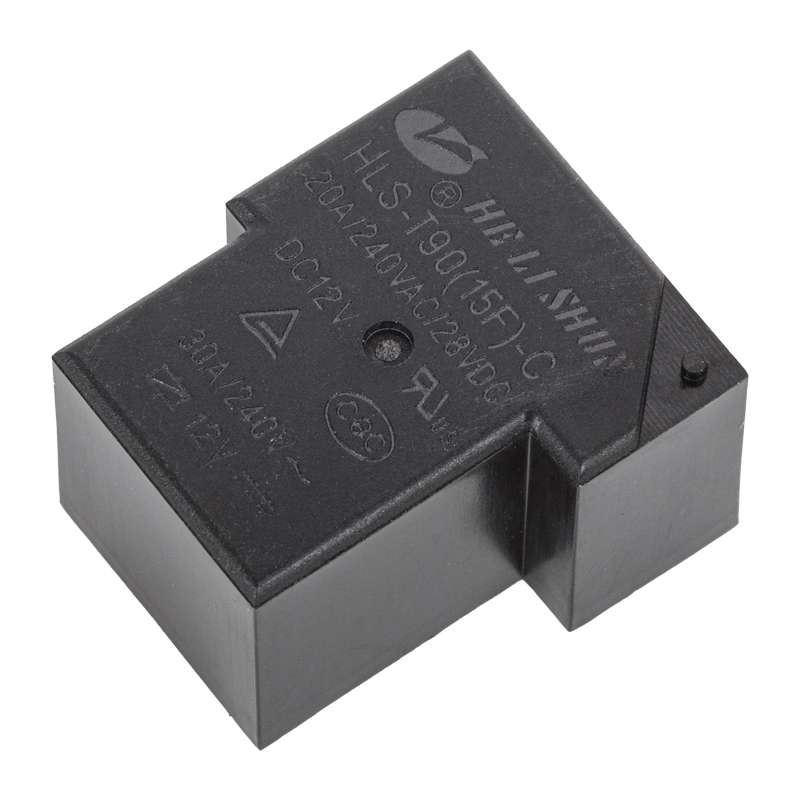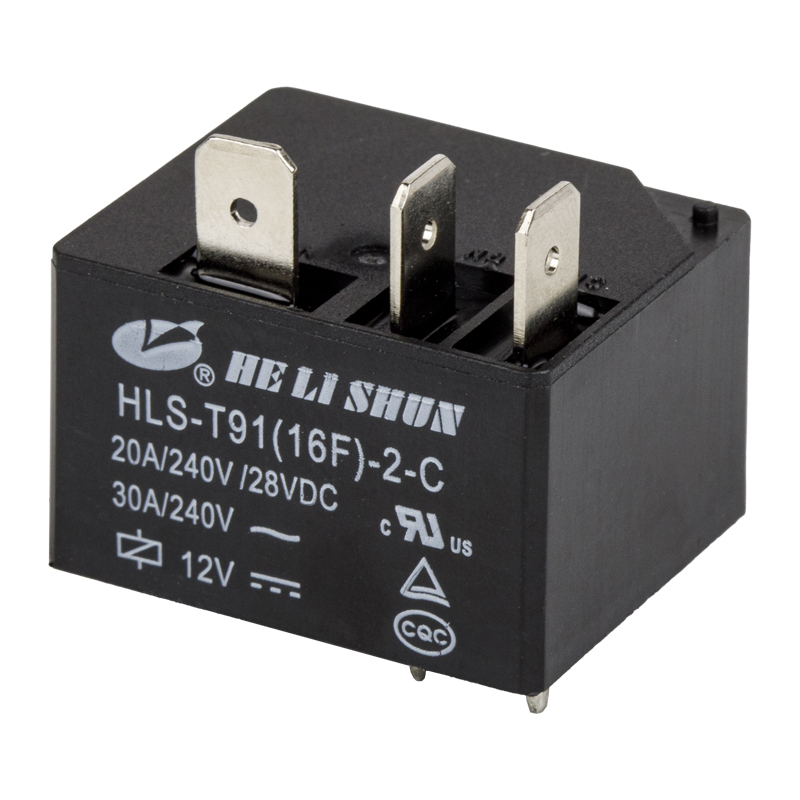In communications and industrial automation systems, equipment often needs to handle complex signals and large current loads. The maximum switching voltage supported by this telecom relay is 240 AC/60 DC and the maximum switching current is 3A. This high-specification electrical performance ensures that the relay can stably and reliably handle signals from different devices and systems, and can maintain normal operation even under high loads or sudden currents. Initial contact resistance is one of the important indicators for measuring the conductive performance of a relay. The initial contact resistance of this telecom relay is only 50mΩ at 6VDC 1A, which is much lower than many similar products, meaning that energy loss during signal transmission is minimal, signal transmission efficiency is higher, and the risk of performance degradation or failure caused by resistance heating is reduced.
Gold and silver are both excellent conductive materials with good corrosion resistance and wear resistance. Alloying these two metals and using them in the contact part of the relay not only improves the conductivity of the relay, but also significantly enhances its corrosion and wear resistance. The choice of this material enables the relay to maintain stable performance in harsh working environments (such as moisture, high temperature or corrosive gas, etc.), extending its service life. In addition to the choice of materials, the telecom relay also adopts a high-reliability design. For example, by optimizing the internal structure and circuit layout, the impact of electromagnetic interference and mechanical stress on the relay is reduced; advanced manufacturing processes and quality control systems are adopted to ensure that each relay meets strict quality standards. These measures work together to make the telecom relay extremely reliable in the fields of communication and industrial automation.
Due to the superior electrical performance and reliability of the telecom relay, it can be widely used in various communication and data transmission systems (such as telephone networks, Internet data centers, wireless communication base stations, etc.) and industrial automation production lines (such as automation control systems, robot production lines, logistics warehousing systems, etc.). Whether it is a communication system that requires high-precision signal transmission or an industrial automation system that requires high-reliability control, the telecom relay can provide strong support. In order to facilitate user use and system integration, the telecom relay adopts a compact design and standardized interfaces. This allows users to easily integrate the relay into existing systems without complex modifications or customization. At the same time, standardized interfaces also facilitate product interchange and upgrading between different manufacturers, providing users with more choices and flexibility.
In order to reduce maintenance costs and downtime, the telecom relay is usually equipped with intelligent monitoring and diagnostic functions. These functions can monitor the operating status and performance parameters of the relay in real time, and issue early warning information in time once an abnormality or potential fault risk is found. Users can perform preventive maintenance based on these early warning information to avoid the occurrence or expansion of faults. In some high-end models, the telecom relay also supports remote monitoring functions. Users can remotely access information such as the operating status and parameter settings of the relay through the network to achieve remote monitoring and management. This function not only improves the maintainability and reliability of the system, but also provides users with a more convenient and efficient management method.
With the global emphasis on environmental protection and energy conservation, the telecom relay also fully considers environmental protection and energy conservation factors in the design and manufacturing process. By adopting low-power design and optimizing circuit layout and other measures, the relay can effectively reduce energy consumption and heat generation during operation and reduce the impact on the environment. This design not only conforms to the environmental protection concept of modern society, but also reduces the operating costs of users.
The telecom relay has many advantages in the fields of communication, data transmission and industrial automation. Its superior electrical performance, high reliability and stability, wide adaptability, convenient maintenance and environmentally friendly and energy-saving design make it one of the indispensable key components in these fields.
Web Menu
Product Search
Exit Menu
news
Home / News / Industry News / What advantages does this telecom relay have over other types of relays in specific areas such as communications, data transmission or industrial automation?
How Can We Help You ?
We reaffirm the high quality service of "high quality, low cost", "integrity builds character, dedication to create quality" as the company's pursuit!
+86-0574-88473018 Contact UsWhat advantages does this telecom relay have over other types of relays in specific areas such as communications, data transmission or industrial automation?
Posted by Admin | 02 Oct
PREV:What positive effects does silver alloy, as a contact material, have on the performance of automotive relays?
NEXT:How to ensure the safety and stability of the circuit when using relay sockets?
NEXT:How to ensure the safety and stability of the circuit when using relay sockets?
Related Products
-
 Hehuaqiao,Yunlong,Yinzhou District,Ningbo,Zhejiang
Hehuaqiao,Yunlong,Yinzhou District,Ningbo,Zhejiang
-
 Tel:+86-0574-88473018
Tel:+86-0574-88473018
+ 86-0574-88344018 -
 Fax:+86-574-88345918
Fax:+86-574-88345918
-
 E-mail: sales@helishun.com
E-mail: sales@helishun.com
sales2@helishun.com
About us
Ningbo Helishun Electron Co.,Ltd. is founded in 2000, located at Ningbo City, the Grand East port on the coastline of the East Sea. We are OEM/ODM Electromagnetic Relays Manufacturers in China
Extra links
QR code
Copyright ? Ningbo Helishun Electron Co.,Ltd. All Rights Reserved. Electrical Relays Suppliers




 English
English 中文简体
中文简体











